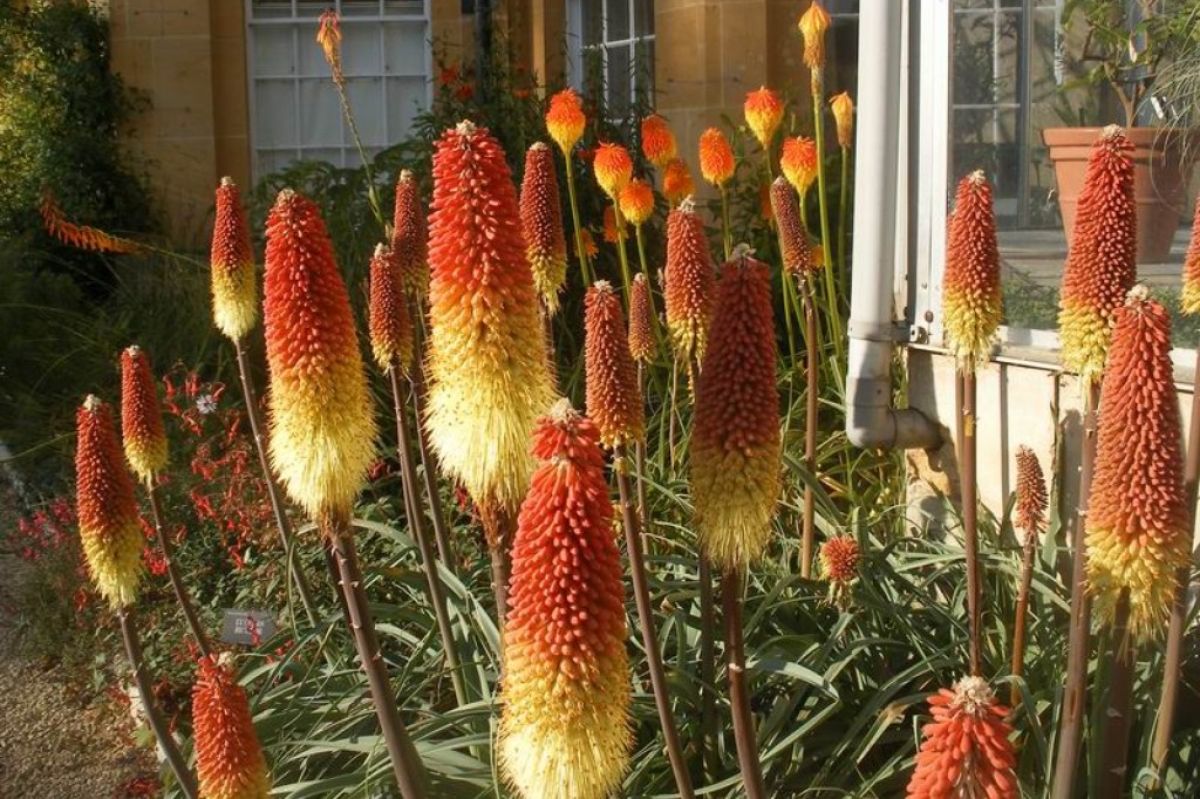Red Hot Pokers belong to the genus Kniphofia (Kniphofia uvaria) and are also known as tritoma or torch lilies.
Some dwarf varieties are 'mango popsicle', 'pineapple popsicle', and 'red hot popsicle'. They are orange, yellow, and red with grassy foliage.
They spread by rhizomes and can become invasive.
Native to South Africa, they like full sun and well-drained soil and do well in zones 6 through 9, as they tolerate heat and drought and dislike boggy soil.
Flowers fade first at the bottoms of the torch-shaped blooms, but the striking blooms last a long time on the plants. After the blooming is over, do not cut down the foliage until it yellows and dies back in the fall.
These are not flowering plants to put in pots or urns, as they look best in clumps and swathes in garden beds. Their vertical shape and vibrant orange, red, and yellow blooms make a strong statement. Give them room to spread and do not combine them with small plants that they will overwhelm.
They are interesting perennials that have become popular on both sides of the Atlantic. While they do not combine well with cottage garden plants, they do create a modern looking presence and are perfect near a mid-century modern home.
This is Moya Andrews, and today we focused on torch lilies.










